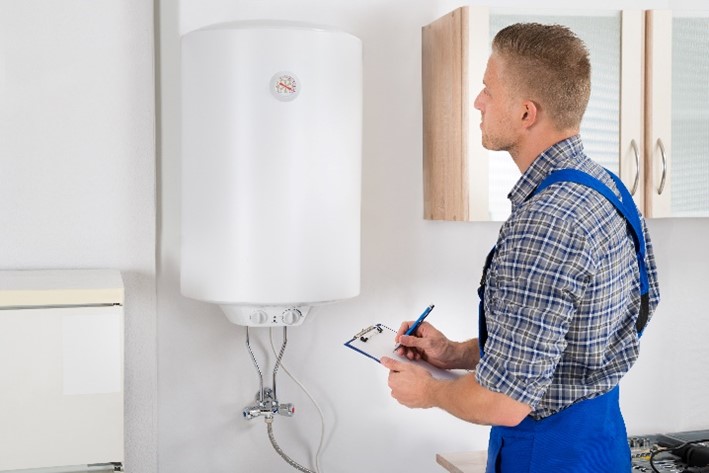What're your opinions about Water Heater Maintenance Tips You Can't Afford to Forget?

Warm water is necessary for everyday comfort, whether it's for a refreshing shower or washing recipes. To guarantee your warm water system runs successfully and lasts longer, routine maintenance is key. This post provides useful ideas and understandings on just how to maintain your home's warm water system to stay clear of disruptions and expensive repair work.
Intro
Preserving your home's hot water system might appear difficult, however with a few straightforward steps, you can guarantee it operates efficiently for years ahead. This guide covers whatever from understanding your hot water system to do it yourself upkeep tips and recognizing when to call expert aid.
Significance of Keeping Your Hot Water System
Routine upkeep not just extends the life-span of your warm water system however additionally ensures it runs efficiently. Overlooking upkeep can result in lowered effectiveness, higher power expenses, and even premature failure of the system.
Indications Your Hot Water System Requirements Upkeep
Understanding when your hot water system requires interest can prevent major issues. Keep an eye out for indicators such as irregular water temperature, odd noises from the heating system, or rusty water.
Purging the Water Heater
Purging your water heater gets rid of sediment build-up, enhancing performance and prolonging its life.
Monitoring and Changing Anode Rods
Anode rods stop deterioration inside the storage tank. Evaluating and changing them when broken is vital.
Complex Problems Needing Specialist Help
Instances consist of significant leaks, electric troubles, or if your hot water heater is consistently underperforming.
Regular Specialist Maintenance Conveniences
Expert maintenance can include extensive evaluations, tune-ups, and making certain compliance with safety criteria.
Examining and Readjusting Temperature Setups
Adjusting the temperature setups ensures optimum performance and safety.
Do It Yourself Tips for Maintenance
You can perform numerous maintenance jobs yourself to maintain your hot water system in leading condition.
Looking for Leaks
Regularly check pipes and connections for leakages, as these can result in water damages and higher bills.
Understanding Your Warm Water System
Prior to diving right into upkeep tasks, it's valuable to understand the basic parts of your hot water system. Typically, this includes the water heater itself, pipelines, anode poles, and temperature level controls.
Month-to-month Maintenance Tasks
Normal monthly checks can help catch minor issues before they escalate.
Evaluating Pressure Relief Valves
Testing the stress safety valve guarantees it works properly and stops extreme pressure buildup.
Protecting Pipes
Insulating hot water pipes reduces heat loss and can conserve power.
When to Call an Expert
While DIY upkeep is advantageous, some issues call for expert competence.
Verdict
Normal upkeep of your home's warm water system is important for performance, durability, and cost financial savings. By following these suggestions and understanding when to seek expert help, you can make sure a reliable supply of hot water without unanticipated interruptions.
How to Maintain an Instant Hot Water Heater
Before tinkering with your hot water heater, make sure that it’s not powered on. You also have to turn off the main circuit breaker and shut off the main gas line to prevent accidents. Also turn off the water valves connected to your unit to prevent water from flowing into and out of the appliance. 2. When you’re done, you have to detach the purge valves’ caps. These look like the letter “T†and are situated on either side of the water valves. Doing so will release any pressure that has accumulated inside the valves while at the same time avoid hot water from shooting out and burning your skin. 3. When the purge valves’ caps are removed, you have to connect your hosing lines to the valves. Your unit should have come with three hoses but if it didn’t, you can purchase these things from any hardware or home repair shops. You can also get them from retail stores that sell water heating systems. Read the user’s manual and follow it to complete this task properly. When the hosing lines are connected, open the purge port’s valves. 4. You should never use harsh chemical cleaners or solutions when cleaning your unit. Make use of white vinegar instead. It should be undiluted and you’ll probably use about 2 gallons. 5. Now flush your water heater. This task should probably take about 40 minutes. We can’t give you specific directions for this because the procedure is carried out depending on the type, model and brand of your heater. With that being said, refer to the user’s manual. 6. When you’re done draining the unit, you have to turn off the purge port valves again. Remove the hosing lines that you earlier installed on each of the water valves. Put the valve caps (purge port) back in their respective places and be very careful so as not to damage the rubber discs that are found inside these caps. 7. Now that everything’s back in place, check your user’s manual again to find out how to reactivate your water heating system. 8. Once it is working, turn one of your hot water faucets on just to let air pass through the heater’s water supply pipes. Leave the tap on until water flows smoothly out of it. https://www.orrplumbing.com/blog/2014/september/how-to-maintain-an-instant-hot-water-heater/

As a fervent reader on Tips on Maintaining a Water Heater, I assumed sharing that post was essential. Those who enjoyed our blog post if you please do not forget to share it. Thanks for your time. Return soon.
Book-Now